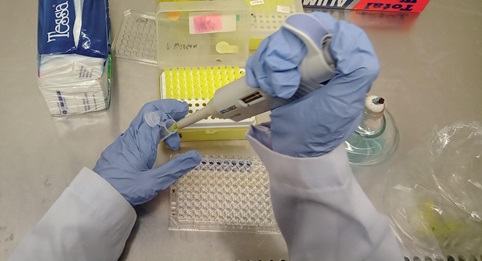
Salmonellosis remains a global health concern. According to WHO, Salmonella bacteria, the cause of Salmonellosis, is one of the four global causes of diarrheal disease.
Salmonellosis results not only in diarrhea but also in severe invasive infections such as bacteremia and meningitis, particularly in at-risk groups such as children, pregnant women, the elderly, and immunocompromised individuals.
Salmonella enteritidis and Salmonella typhimurium are the primary causes of the infections. These bacteria are commonly found in contaminated animal products. As a result, everyone is at risk of contracting salmonellosis.
Salmonella’s increased resistance to antibiotics further exacerbates this issue. If not appropriately managed, antibiotic resistance is estimated to cause up to 10 million deaths per year by 2050.
This situation has prompted the development of new antibacterials derived from natural sources. One such antibacterial source is Actinobacteria.
Actinobacteria, especially those derived from the sea, are potential antibiotic sources that exhibit antibacterial activity against Vancomycin-resistant Enterococcus, Methicillin-resistant Staphylococcus aureus, and other antibiotic-resistant bacteria.
Motivated by these concerns, five UGM students researched “Anti-Salmonellosis from Actinobacteria Associated with Red Seaweed Gelidiella acerosa” through the 2023 Student Creativity Program in Exact Sciences Research.
The team comprised Ruth Grace Sophie (Aquatic Resource Management 2021), Alifia Zahra Khoirunnisa (Aquatic Resource Management 2021), Badran Sa’adi (Agricultural Microbiology 2020), Bhimantoro Achnaf Vetrino (Veterinary Medicine 2020), and Shinta Hayyu Anugrah (Veterinary Medicine 2020) under the guidance of Dr. Noer Kasanah.
They tested the antibacterial activity of Actinobacteria isolated from the red seaweed Gelidiella acerosa, obtained from Drini Beach, known for its highest species diversity of red seaweed in Gunungkidul, Yogyakarta.
Ruth Sophie explained that the isolated Actinobacteria were fermented in a specific medium, followed by extraction. Thin-layer chromatography (TLC) analysis was performed to detect terpenoids in the extract.
Extracts showing positive terpenoid results were then tested against Salmonella enteritidis using the microplate titer assay method in a 96-well plate.
The extract with the best antibacterial activity was further analyzed using Liquid Chromatography-Mass Spectrometry (LC-MS) to identify potential antibacterial compound content.
From the LC-MS results and compound dereplication of the two most potent extracts with the Comprehensive Marine Natural Products Database (CMNPD), it was discovered that three compounds with the highest peaks from each extract were not listed in the database.
Extract 1 contained 7 out of 8 unnamed compounds, while extract 4 had 9 out of 11 compounds analyzed that were not yet identified. The compounds identified from extract 1 were Nocapyrone R, and from extract 4, Nocapyrone M and Nocapyrone J.
“Nocapyrone is a compound found in Nocardiopsis, a genus of Actinobacteria. These compounds can be derived from Nocardiopsis isolated from the sea and utilized as antibiotics, anticancer, antitumor, and antibacterial agents based on their types,” she elaborated.
Author: The UGM Anti-Salmonellosis Research Team
Editor: Ika

